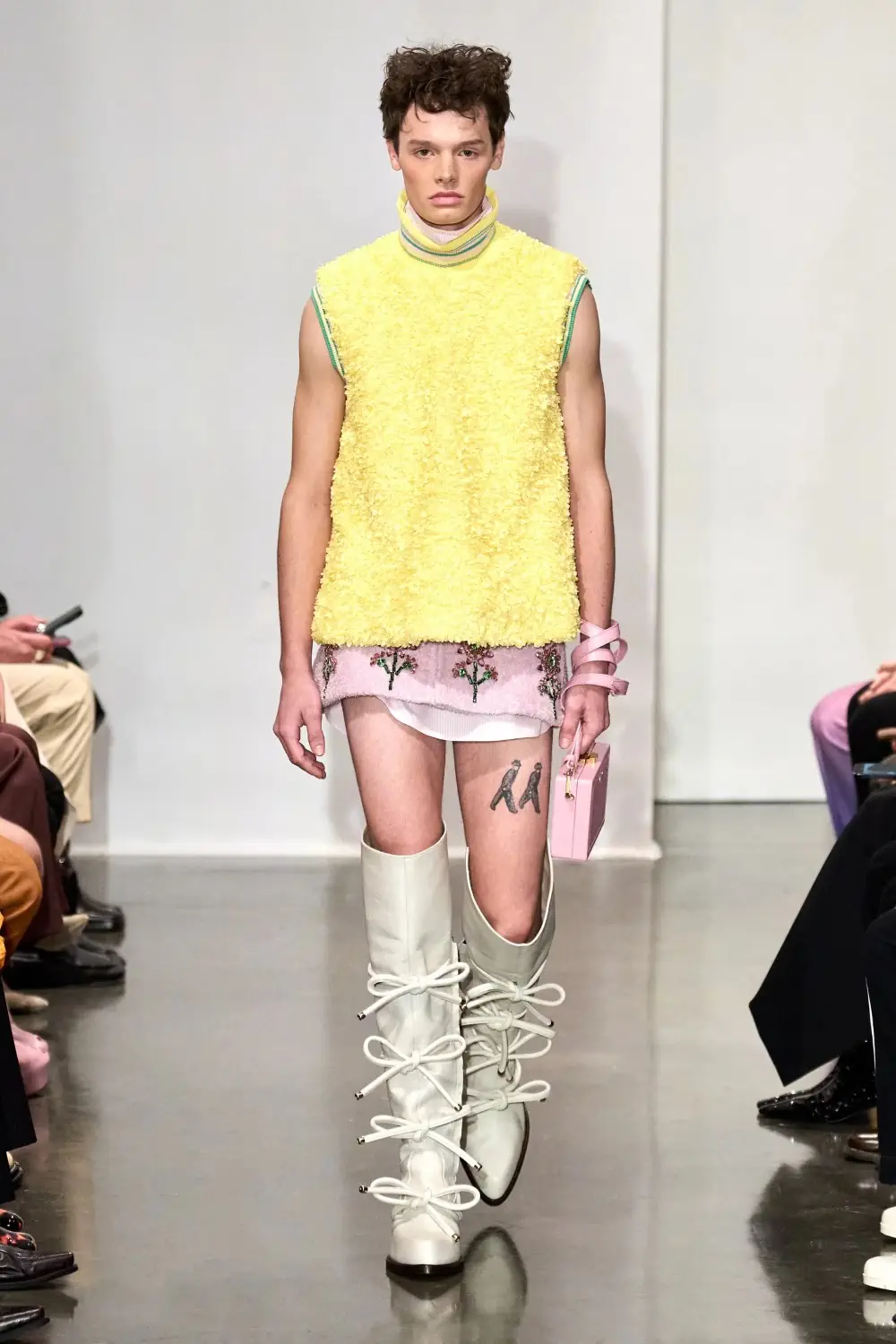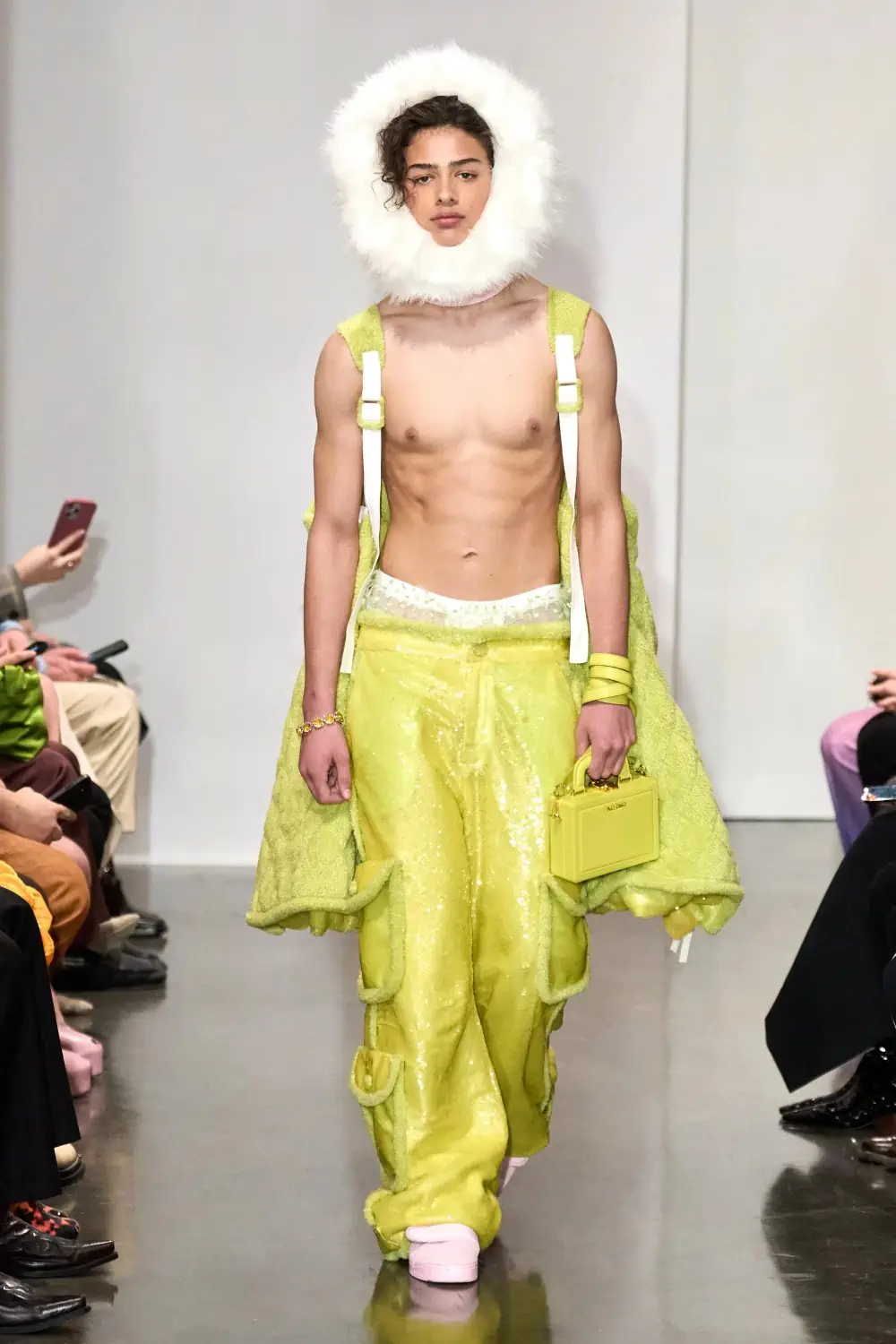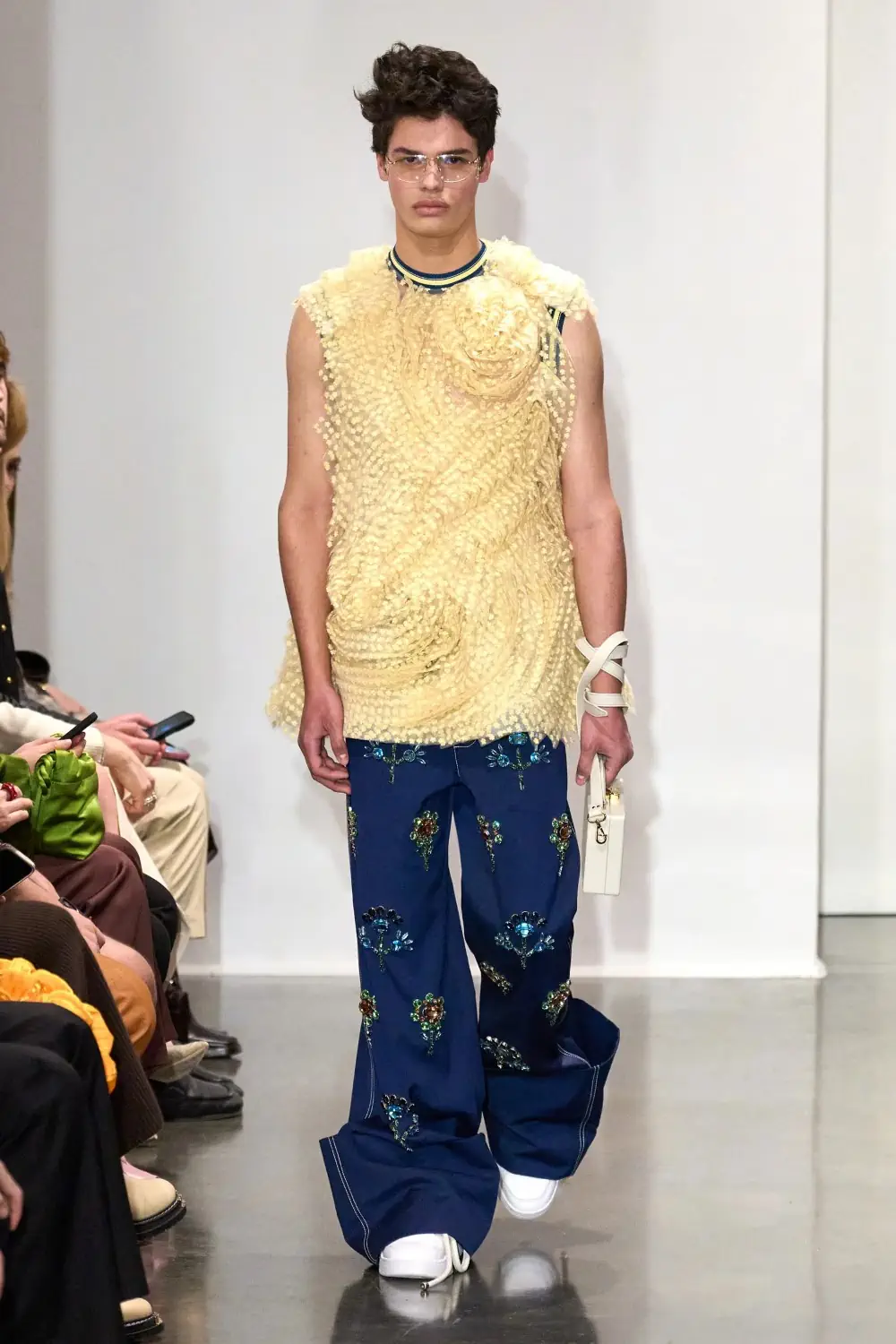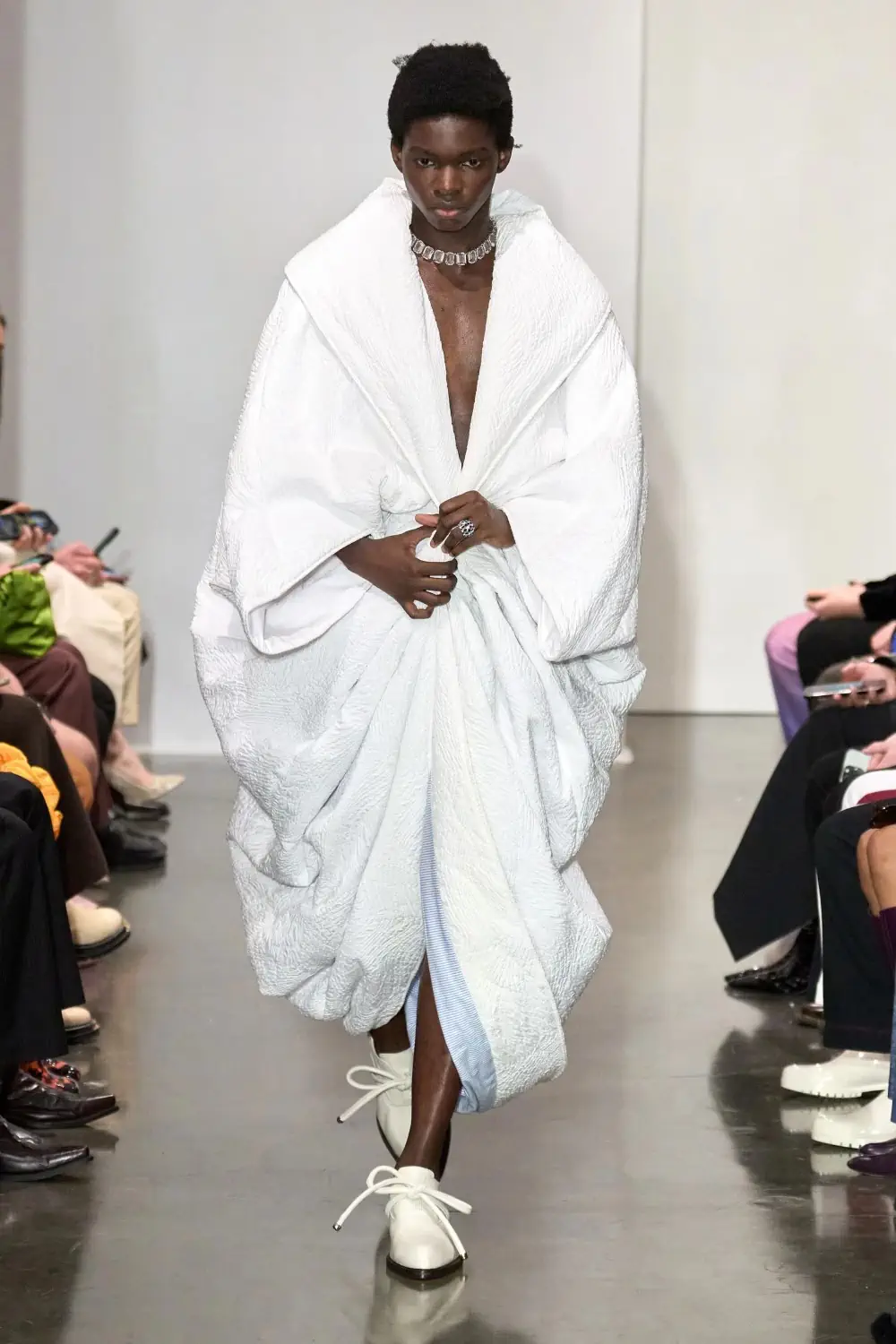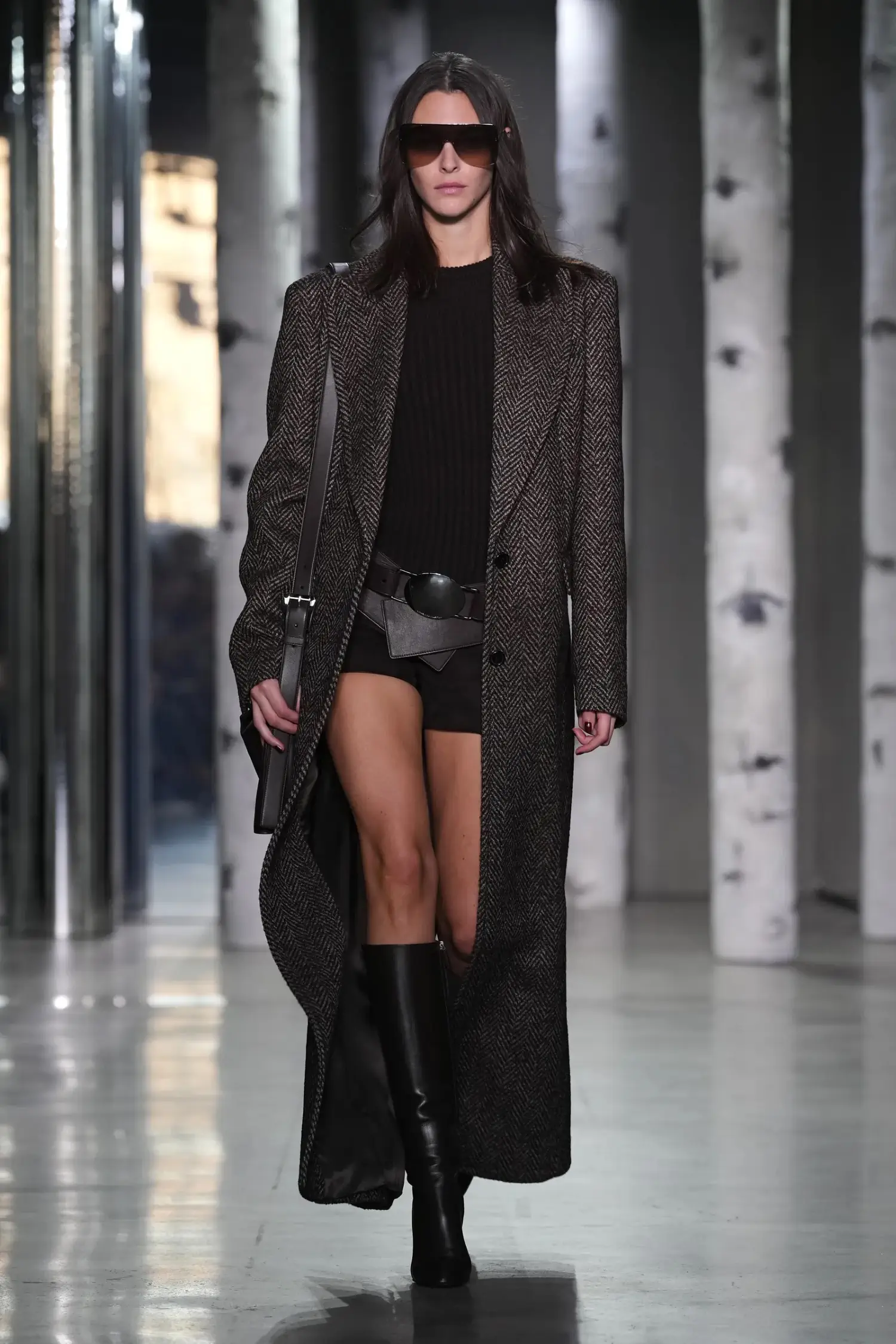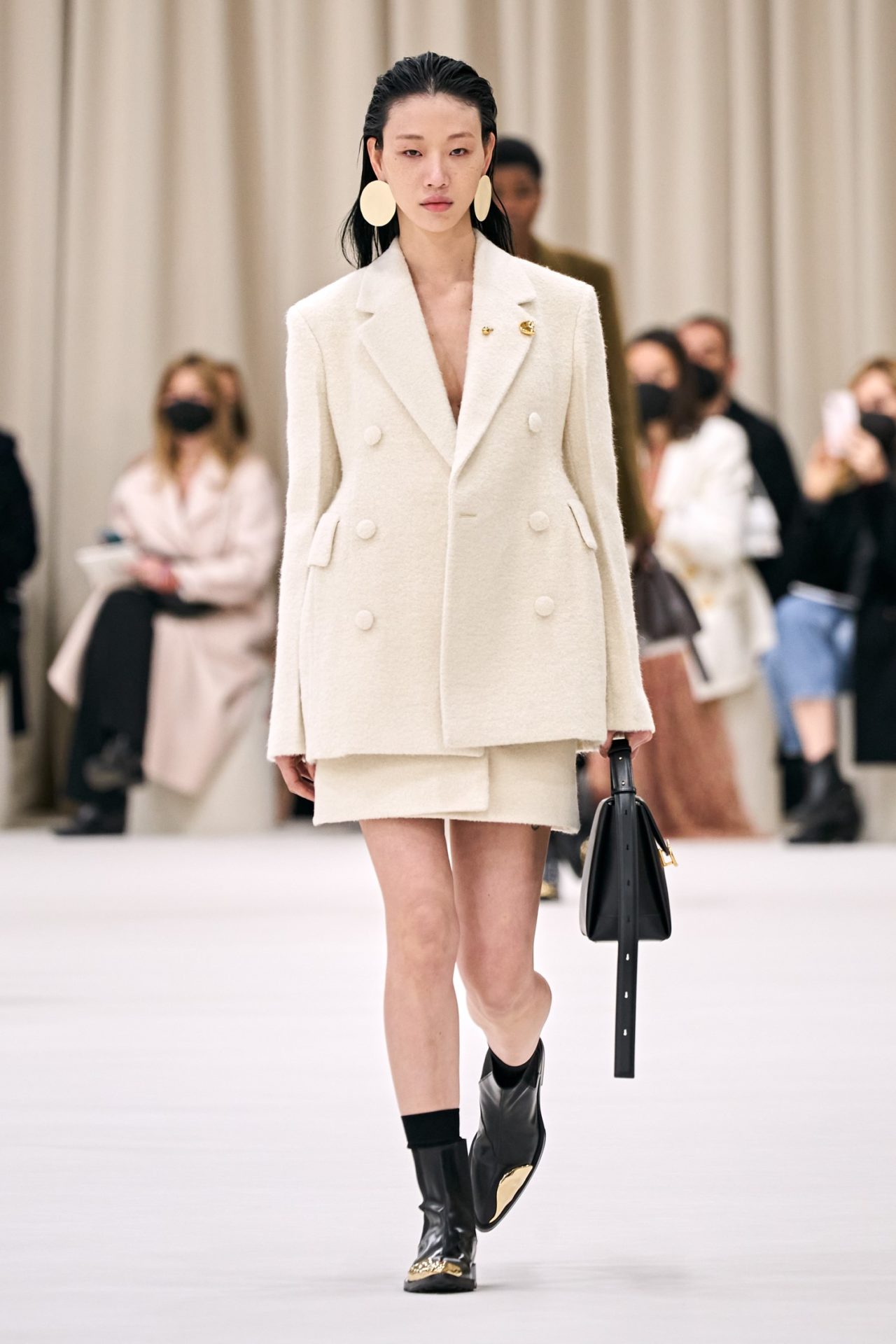Alejandro Gómez Palomo returned to New York in grand fashion with his latest collection for Palomo Spain, entitled “The Closet“.
This was Palomo’s third showcase in the city, and the fashion industry was eagerly anticipating what he had in store. The collection was inspired by Palomo’s own experiences and those of those around him, exploring their relationship with clothing before they fully grasped the concept of gender and its norms.
At a preview event, Palomo shared that the moodboard for the collection was filled with childhood photos of the design team, evoking a sense of innocence and freedom. It was a time when anything was possible and clothes were simply a form of self-expression. Palomo credited his mother for allowing him this freedom and for instilling in him the belief that he could be whoever he wanted to be, even in his work.
The collection transported the audience to a world where anything was possible, where pirates could coexist with choirboys and Cinderella with jocks. Palomo’s dream closet was filled with vintage Balenciaga and 60s-style miniskirts and babydolls, all paired with fairytale-inspired cuissard boots. The designer also ventured into the bedroom with models wearing pillow hats and shirting worn backwards, paying homage to bedclothes. The use of terry fabrics, reminiscent of towels, added a feeling of comfort and coziness.
Despite the soft and whimsical themes, there were underlying hints of transgression. Palomo explained that he wanted to convey a sense of safety but also the excitement of doing something that was somewhat taboo. His work is rooted in history, drawing inspiration from his Spanish and European heritage, and he incorporated baroque music into the show to emphasize this historical aspect.
In Palomo’s world, time is constantly in motion, looping back and revisiting the past for inspiration. This collection was no exception, with the opening look and many others created using a couture-like technique of layering thousands of strips of tulle by hand, a technique first seen in his second collection.


















